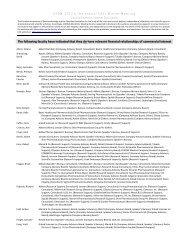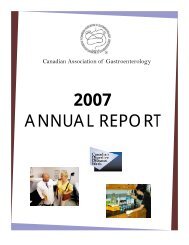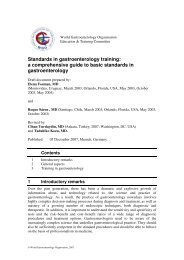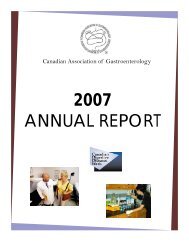Wait Times A Medical Liability Perspective - The Canadian ...
Wait Times A Medical Liability Perspective - The Canadian ...
Wait Times A Medical Liability Perspective - The Canadian ...
Create successful ePaper yourself
Turn your PDF publications into a flip-book with our unique Google optimized e-Paper software.
BACKGROUND4As a starting point, it is perhapsinstructive that the very definition ofwait times is the subject of some debate.Most discussions regarding wait times forhealth care use as the basis ofmeasurement the time between attendanceat a consulting specialist and thecompletion of investigations or treatment.Some important participants in thediscussion, in particular the College ofFamily Physicians of Canada, haveexpressed the view that the determinationof wait times should also take into accountthe time between the patient’s first visitwith his or her family physician and whenrequired, subsequent visits withconsultants, as well as the time it takes fora patient who does not have a familyphysician to find one. 1 Regardless of thedefinition chosen, the CMPA is of theview that a common, clearly communicateddefinition is required and such adefinition should form the basis for allmeasurement activities.It is also important to acknowledge therequirement to wait for access to health careis neither new, nor is it a situation that isrestricted to Canada. Timely access to healthcare is part of a broader issue of limitedhealth-care resources that will likely, to someextent, always be present. It is safe topredict there will always be a gap betweenthe demand for health-care services and theresources available to provide them. Giventhe demand is not constant, completelyeliminating the gap would likely result inexcess capacity. This would result in poormanagement of valuable healthcareresources.Accordingly, the reality is waiting times willnever be zero. While disconcerting for thoseinvolved, manageable queues of patientsawaiting non-urgent and elective proceduresresult in the best use of health-care capacity.If one accepts that the effective managementof health-care wait times will be apermanent requirement, then the need toaddress accountability and liability issuestakes on a strong degree of urgency.In many <strong>Canadian</strong> jurisdictions, and formany clinical conditions, wait times are solengthy they can be challenging to manage.<strong>The</strong>refore, the issue facing the <strong>Canadian</strong>health-care system is how to reduce waittimes and how to manage patients whomust wait for an overly long period of timebefore receiving care. <strong>Wait</strong> times havebecome the focus of considerable publicattention and are, for better or worse, themeasure many people now use to gradeeffectiveness of the health-care system. Inview of the multi-faceted nature of anysolution to reducing wait times, quickprogress on this issue is, while highlydesirable, unlikely. Limiting investment inhealth care, either in the training ofphysicians, nurses and other health-careprofessionals or in the construction andmaintenance of infrastructure, has long-termconsequences. As an example, as Canada andmany other nations have learned fromexperience, resolving a shortage of healthcareprofessionals is not a task that can beaccomplished in the short term. Reversingthese effects requires both immediate actionand a long-term commitment.1When the Clock Starts Ticking – <strong>Wait</strong> <strong>Times</strong> in Primary Care. www.cfpc.ca
















